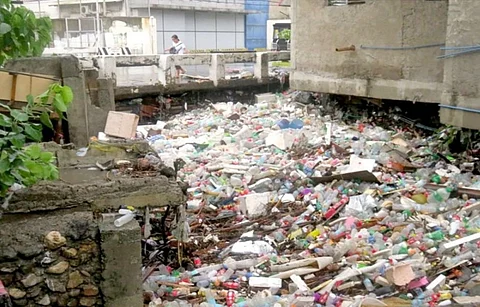

There is a disconnection between theory and practice, principles and experiences of climate change adaptation and disaster risk reduction and management (CCA-DRRM).
The gaps are crucial as Filipinos, along with other citizens in the world, grapple with extreme weather on earth.
“Extreme weather” refers to phenomena that is unusual or severe for a particular place or time.
However, the recent flash floods submerging many communities in Cebu after either heavy rains or successive days of constant rain show how inclement weather, whether severe or unusual or none of these, immediately pose threats on life and property.
The Intergovernmental Panel on Climate Change (IPCC) pointed out that in 2020, the number of extreme weather occurrences increased, making the resulting disasters an “increasingly habitual occurrence.”
Whether the extreme weather takes the form of a heat wave, flooding or drought, the IPCC focused on people’s responsibilities for causing and preventing climate change. In its August 2021 report, the IPCC pointed out that people increase greenhouse gas emissions, which partly cause the rise of temperatures worldwide.
Yet, implementing CCA-DRRM strategies focusing on people as causes contributing to climate change, as well as solutions that can be tapped to prevent or mitigate the consequences of disasters resulting from extreme weather still leaves much to be desired.
A case study of the Philippines’s climate change governance framed by the Climate Change Act, which was uploaded on the website of the Climate and Development Knowledge Network, identifies the lead roles taken by local governments in CCA-DRRM, particularly in identifying “communities and areas most vulnerable to adverse impacts” and anticipating “differential impacts on women, children, and marginalized populations.”
The www.cdkn.org case study highlights the need for “more systematic and inclusive consultations that engage with local communities and grassroots organizations.”
Communities made most vulnerable by climate change are, unfortunately, the least consulted and involved in carrying out CCA-DRRM: “farmers, fisherfolk, indigenous peoples, the urban poor, women and young people.”
Failure at stakeholder consultations limits the sustainability of measures for CCA-DRRM. For instance, how is Lapu-Lapu City faring in implementing zero-waste initiatives?
In May 2021, the Lapu-Lapu City Government partnered with the Environment Management Bureau in Region 7 to pilot the Refill Revolution, which aims to assist local entrepreneurs to make the transition from being businesses generating considerable volumes of plastic waste to achieving zero waste.
A year after the piloting of the Refill Revolution in Lapu-Lapu City, many citizens have not yet heard of the initiative to encourage consumers to bring their own containers to be refilled in stores, doing away with plastic packaging that is seldom re-used.
Charisse, a Pajac resident, claimed that local authorities have not educated communities about zero waste, observing that plastic packaging continues to litter the sidewalks and roads, particularly surrounding the local market and vehicles-for-hire terminal areas.
Nenita, a government employee, said that carrying refills adds to her packages during commuting. She claims she does not know where she can find stores that serve as refilling stations. She is also hesitant about buying refills because these may be adulterated or not reflecting the correct volume.
While people are quick to trace the cause of flash floods and sea pollution to single-use plastic that obstruct natural and man-made waterways, the fruits from building consensus and mobilizing citizens to solve the plastic problem remain elusive, with governments and the people, technocrats and entrepreneurs needing to listen to each other and learn more to make CCA-DRRM a reality.